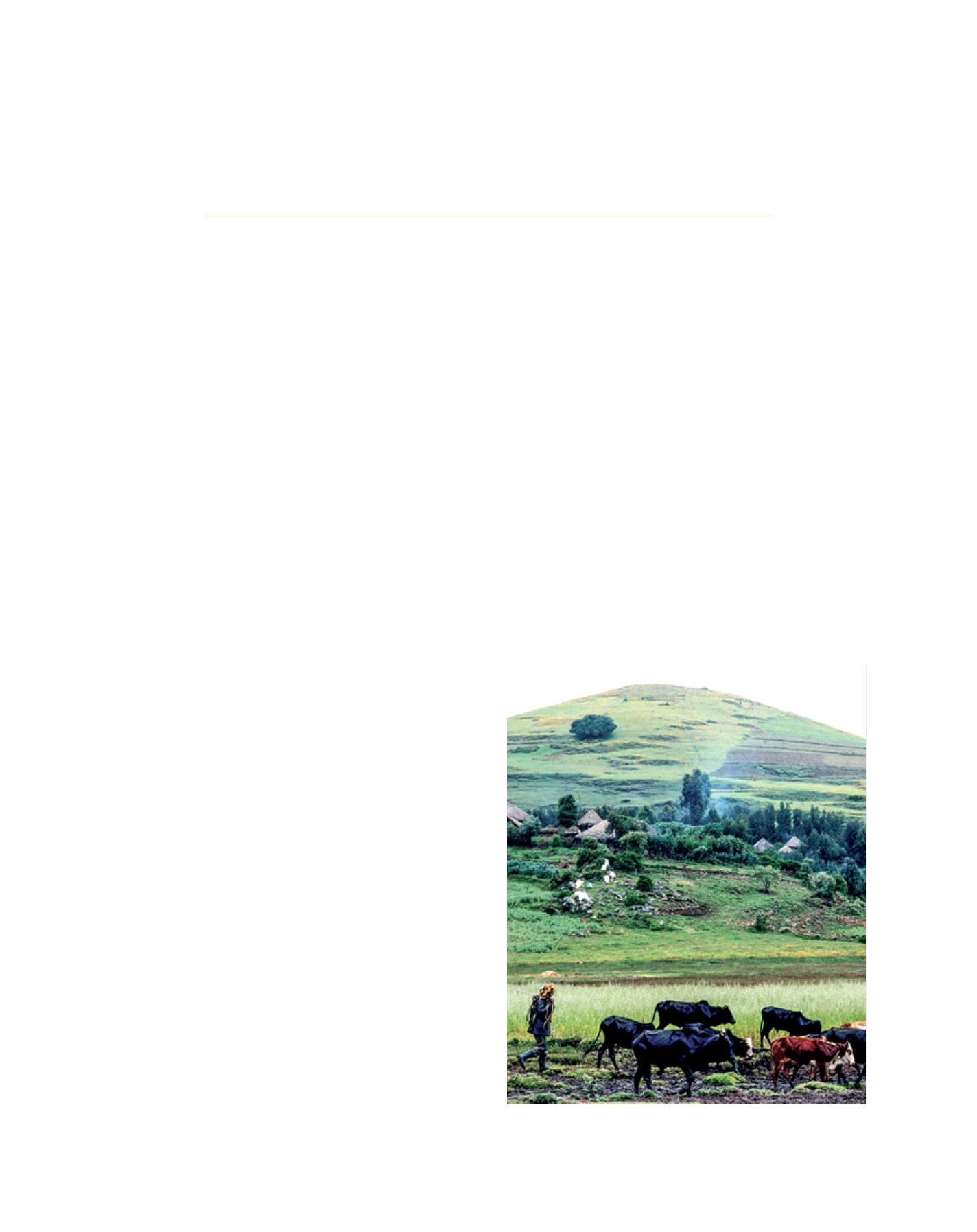

[
] 120
Livestock farming boosts local
economies in developing countries
Steve Staal, Susan MacMillan, Jacqueline Escarcha and Delia Grace, International Livestock Research Institute
D
eep
R
oots
P
icture a family farm in a developing country. What
do you see? A small plot of maize or rice or other
staple food? Maybe a vegetable patch or a cash crop
or two as well? If so, your view is similar to that of many
agricultural and development experts and government
planners whose focus is on staple food supplies for our
increasingly crowded world.
But look out over a farm fence anywhere in these countries
and you are likely to find yourself staring into the face of a
farm animal. Livestock matters a great deal in developing
countries, playing an increasingly important role in food
security and economic development. In fact, the livestock
subsector is growing faster than all other agriculture sectors
in developing countries worldwide. And importantly in
the International Year of Family Farming, the bulk of that
livestock production is occurring on small family farms.
Livestock farming offers unique features to support local
livelihoods and economies, especially for women.
Some 70 per cent of the world’s 37 billion farm animals
are raised in developing countries, and that share will
increase in the coming decades. A major reason for this is
an ongoing dramatic rise in demand for meat, milk and eggs
in developing countries, far outstripping that for grains,
starches and other food crops. This ‘livestock revolution’
1
is a result of dietary changes due to increasing urbaniza-
tion and incomes, both of which lead people to spend more
of their disposable income on meat and other high-value
animal-source foods than on maize, rice, potatoes and other
cheaper staples. As a consequence, total demand for live-
stock products is expected to double by 2050 from 2000
levels.
2
Nearly all of that growth is occurring in developing
countries, where experts anticipate a 37 per cent rise in per
capita consumption of animal-source foods, even as rich-
country consumption levels flatten or decline.
Further, because feeds are easier to trade than perishable
livestock products, 90 per cent of the increased livestock
production will occur in the same developing regions where
demand for animal-source foods is growing. On aggregate,
livestock enterprises now comprise about 40 per cent of total
agricultural gross domestic product of developing countries,
a proportion expected to grow to 50 per cent in the next few
decades. Because livestock products are intrinsically energy-
dense and high value, four of the five highest value agricultural
commodities globally are livestock products, with dairy as
the highest value agricultural commodity globally.
3
All of this
indicates that important new opportunities are opening for
livestock producers, particularly for family farmers in devel-
oping countries.
Smallholder family farms still dominate livestock produc-
tion in most developing countries, especially with ruminant
animals such as cattle, water buffalo, sheep and goats. These
animals can remain productive by subsisting largely on
low-cost roughages, stovers and other crop by-products
produced or gathered locally, providing smallholders with
a comparative advantage over larger livestock producers.
Other advantages of family farms are access to underutilized
family labour and the many synergistic benefits accruing
to small farmers who integrate crop growing with animal
raising, such as more efficient nutrient cycling, soils better
nourished with animal manure and use of animal traction
for cultivating croplands. For these reasons, family livestock
farms still compete strongly against large producers in many
A mixed farm in Ethiopia: the livestock subsector is growing faster than all
other agriculture sectors in developing countries
Image: ILRI
















